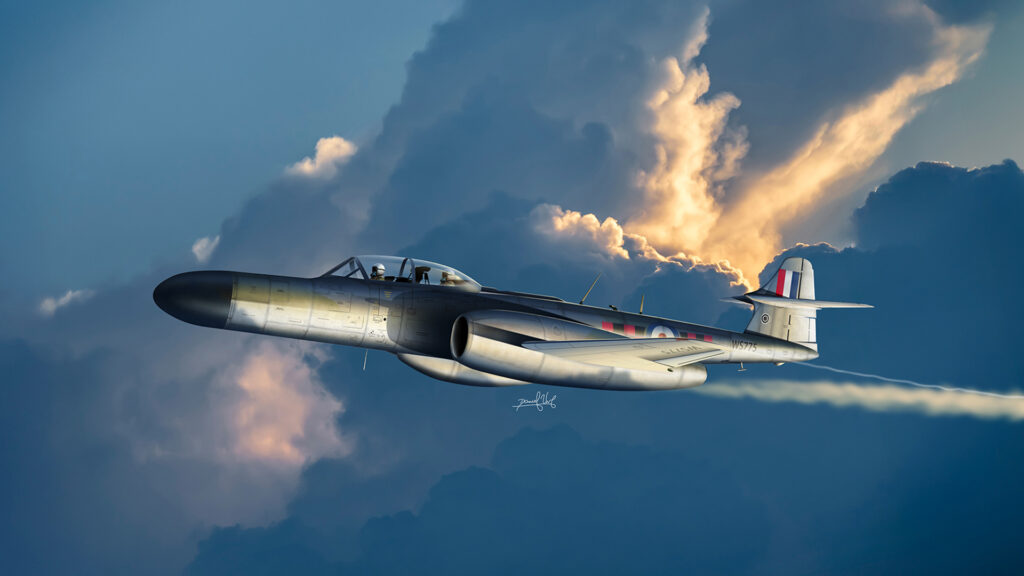This work was done for a model kit company as cover box, using illustrator and Photoshop.
A bit about the Armstrong Whitworth Gloster Meteor NF14:
It was the first British jet fighter and the Allies’ only jet aircraft to engage in combat operations during the Second World War. The Meteor’s development was heavily reliant on its ground-breaking turbojet engines, pioneered by Frank Whittle and his company, Power Jets Ltd. Development of the aircraft began in 1940, although work on the engines had been under way since 1936.
The Meteor first flew in 1943 and commenced operations on 27 July 1944 with No. 616 Squadron RAF. The Meteor was not a sophisticated aircraft in its aerodynamics, but proved to be a successful combat fighter. Gloster’s 1946 civil Meteor F.4 demonstrator G-AIDC was the first civilian-registered jet aircraft in the world. Several major variants of the Meteor incorporated technological advances during the 1940s and 1950s. Thousands of Meteors were built to fly with the RAF and other air forces and remained in use for several decades.
To replace the increasingly obsolete de Havilland Mosquito as a night fighter, the Meteor was adapted to serve in the role as an interim aircraft. Gloster had initially proposed a night fighter design to meet the Air Ministry specification for the Mosquito replacement, based on the two seater trainer variant of the Meteor, with the pilot in the front seat and the navigator in the rear.
- Meteor NF.14
- NF.11 with new two-piece blown canopy rather than the heavy-framed version. It also had a longer nose giving a length of 51 ft 4 in. Prototype modified from an NF.11 was first flown 23 October 1953 and was followed by 100 production aircraft built by Armstrong Whitworth for the Royal Air Force.
Want your own artwork?

